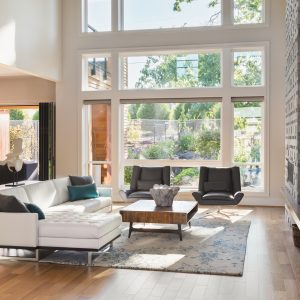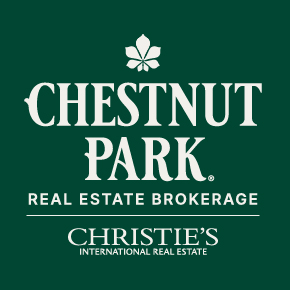There are thousands of available homes on MLS that may be perfect for you! Include your name and email address below to receive your custom list of new available homes in your desired neighbourhoods each morning. You will often receive new listings before they appear on other sites such as REALTOR.ca, giving you a head start with your search.

The new normal in the Toronto residential real estate market has arrived. It has been finding its way for several months now, guided by the implementation of mortgage stress testing, the foreign buyer tax, and a number of mortgage interest rate hikes. It is now crystal clear, that the frenzied market of 2016 and early 2017 was in a phrase: driven by cheap, and easy money. There were other factors at play, such as a shortage of properties available for sale and the net migration to the greater Toronto area, but at the end of the day, it was access to mortgage rates that were, for several months, less than the prevailing inflation.
September’s market results illustrate the new normal. There were 6,455 reported sales during the month. In September of 2017 6,334 residential properties were reported sold, a 1.9 percent year-over-year increase. The average sale price followed a similar trajectory. Last September the average sale price for all properties sold in the greater Toronto area was $774,489. This September the average sale price increased moderately to $796,789, or 2.9 percent. The era of double-digit increases year-over-year is at an end.
This pattern can also be seen at the high end of the market. Last year there were 188 properties reported sold that achieved a sale price of $2 Million or more. This year the number of similar properties reported sold was 189. A comparison to similar properties sold in 2016 poignantly indicates how the market has moderated. In September 2016, 297 properties sold in this category: 57 percent higher than the sales achieved this year.
The distinction between the 905 and the 416 regional marketplaces persists late into the year. The average sale price for all properties sold in the 416 region (the City of Toronto) came in at $864,275. Last year it was $809,591. The average sale price in the 905 region came in at $796,786. Last year it was $775,546. Year-over-year the average sale price in the City of Toronto has increased by 7 percent, while the average sale price in the 905-region increased by slightly less than 3 percent. Sales in both regions were relatively consistent with last year, with the 905 region showing a small overall increase.
It Is interesting to note that all sales in the City of Toronto came in at 101 percent of their asking price. In the 905 region sales only achieved 99 percent of their asking price. Similarly, all sales in the City of Toronto occurred (on average) in 21 days. It took 26 days for sales outside the 416 region.
Inventory levels are beginning to stabilize as a result of a decline in new listings coming to the market this September. This year 15,920 new listings became available to buyers. Last year over the same period 16,433 new properties hit the market, a decline of more than 3 percent. Heading into October there were a little more than 20,000 residential properties available to buyers, an increase of 5.6 percent compared to last year. Expect that discrepancy to come to an end in the months ahead as properties continue to sell, and fewer properties come to market.
The bulk of the 20,089 available properties for sale in the greater Toronto area are located in the 905 region. Of those properties, only 5,830 were to be found in the City of Toronto, the rest in the 905 region. Translated into months of inventory there are 2.6 months of inventory in the 905 region and only 1.9 months in the City of Toronto. It is not surprising therefore that all properties in the City of Toronto sold in 21 days and it took 26 days for properties to sell in the 905 region.
In the City of Toronto, semi-detached properties remain the most sought-after housing types, notwithstanding that in most parts of the City they are becoming quite pricey. In September all semi-detached properties sold in only 18 days and at 106 percent of their asking price. The average sale price for all semi-detached properties sold in the City of Toronto came in at just shy of $1 Million ($995,951). The eastern trading areas in Toronto continue to be the hottest for these housing types. In the neighbourhoods of Riverdale, Leslieville, and the Beaches all semi-detached properties sold in only 15 days and for a startling 112 percent of their asking price. Inventory shortages of semi-detached properties are pushing down days on market and putting upward pressure on sale prices.
Condominium apartment sales in the City of Toronto lost some steam this September. Last year 1,362 condominium apartments sold in Toronto. This year that number dropped to 1,282, a decline of over 5 percent. Since inventory levels were only marginally different compared to last year, the difference can more likely be attributed to affordability. In the City of Toronto, the average sale price for condominium apartments came in at $615,582. Last year the average sale price was only $554,000. In Toronto’s central core, where most condominium apartment sales are recorded, the average sale price came in at a whopping $687,701, or almost 12 percent higher than last September. At prices now approaching $1,000 a square foot, the average priced central core condominium apartment is less than 700 square feet.
Given the strength of the Canadian economy, a further mortgage interest rate hike is expected in October. In combination with previous rate hikes and the stress testing that is now being applied by lenders, the residential resale market will be confined to its present pace and rhythm for some time.
Welcome to the new normal.
Prepared by Chris Kapches, LLB, President and CEO, Broker, Chestnut Park® Real Estate Limited, Brokerage.
Have questions about the market or selling or buying?
Contact me any time. I’m happy to answer any questions you may have.

